Growing spaghetti squash requires full sun and well-drained soil—plant seeds after the last frost for best results.
Spaghetti squash, a popular variety among gardeners, is prized for its unique, pasta-like strands that offer a nutritious substitute for traditional noodles. Thriving in warmer climates, this winter squash variety needs ample sunlight and space to flourish. Ensuring a successful harvest involves preparing the garden bed with fertile, well-drained soil and sowing seeds once the frost threat has passed.
Consistent watering and routine maintenance encourage healthy growth, preparing fruit for harvest in late summer or early fall. Gardeners appreciate spaghetti squash for its delicious taste and versatility in recipes, making it a must-grow in any home vegetable garden.
The Allure Of Spaghetti Squash
Spaghetti squash shines as a remarkable vegetable in gardens and kitchens. This squash variety garners attention for its stringy, pasta-like flesh. Gardeners love how it thrives with a little care. Cooks adore its versatility and health benefits.
This unique squash transforms into tasty, healthy dishes. Gardeners delight in growing spaghetti squash for its high yield. Chefs and home cooks relish concocting nutritious meals.

Versatility In The Kitchen
Spaghetti squash’s texture and mild flavor make it a perfect base for various recipes.
- Baked with herbs and cheese.
- Stuffed with meats or veggies.
- Swapped in for pasta in traditional dishes.
- Light sauté with garlic and oil.
Nutritional Value
Spaghetti squash is much more than tasty. It is a nutritional powerhouse.
| Nutrient | Amount |
|---|---|
| Calories | 42 |
| Fiber | 2.2g |
| Vitamin C | 2.1mg |
| Potassium | 180mg |
It boasts low calories and carbs, making it ideal for many diets. Its high fiber content supports healthy digestion.
Choosing The Right Seeds
Starting a spaghetti squash garden begins with selecting the perfect seeds. The right seeds pave the way for a bountiful and healthy harvest.
Consider various factors like the squash variety, seed quality, and source. Opting for the right seed type guarantees a thriving garden with delicious spaghetti squash.
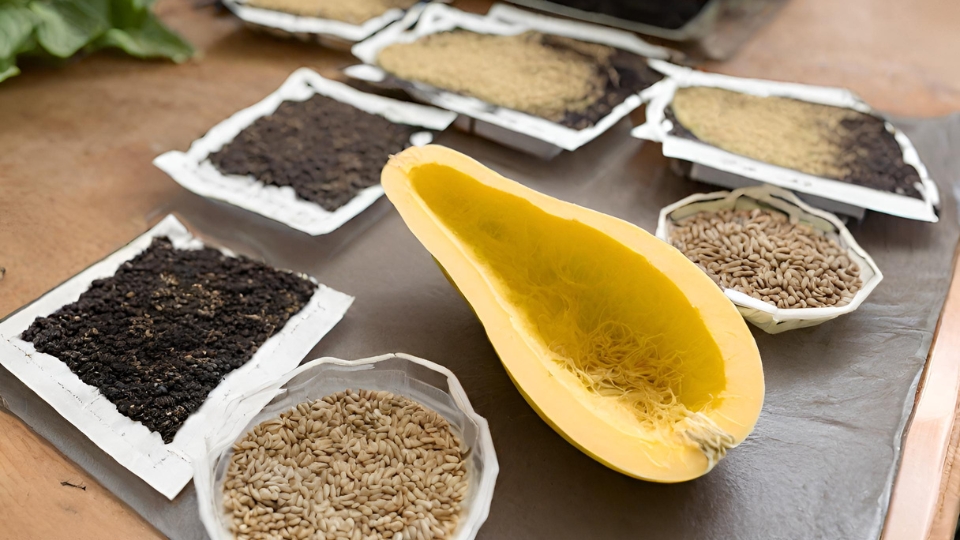
Heirloom Vs. Hybrid Varieties
Heirloom seeds are passed down through generations. They grow into plants with the same traits as their parent plant. This consistency means you know exactly what to expect from your harvest. Heirloom spaghetti squash often offers richer flavors and traditional textures that many gardeners love.
On the other hand, hybrid seeds come from cross-pollinating two different squash varieties. They are bred for specific characteristics, like disease resistance and increased productivity. While hybrid spaghetti squash varieties may provide a more robust plant, they cannot reproduce true to type from saved seeds.
Seed Suppliers And Quality
The quality of seeds affects your garden’s success. High-grade seeds lead to stronger plants and better yields. Select trustworthy vegetable seed suppliers that offer high germination rates and pure seed varieties.
- Look for suppliers with positive reviews and a reputation for quality.
- Check if the supplier tests seeds for germination rates.
- Consider suppliers who provide organic and non-GMO seeds for a natural garden.
Ensure packets have a pack date or sell-by date to guarantee freshness. Fresh seeds will give your garden the best start.
Best Time To Plant
Planting spaghetti squash requires timing it just right. Knowing the best time to plant is crucial for a bountiful harvest. The right planting time varies by region and climate, yet there is a general window for optimal growth.
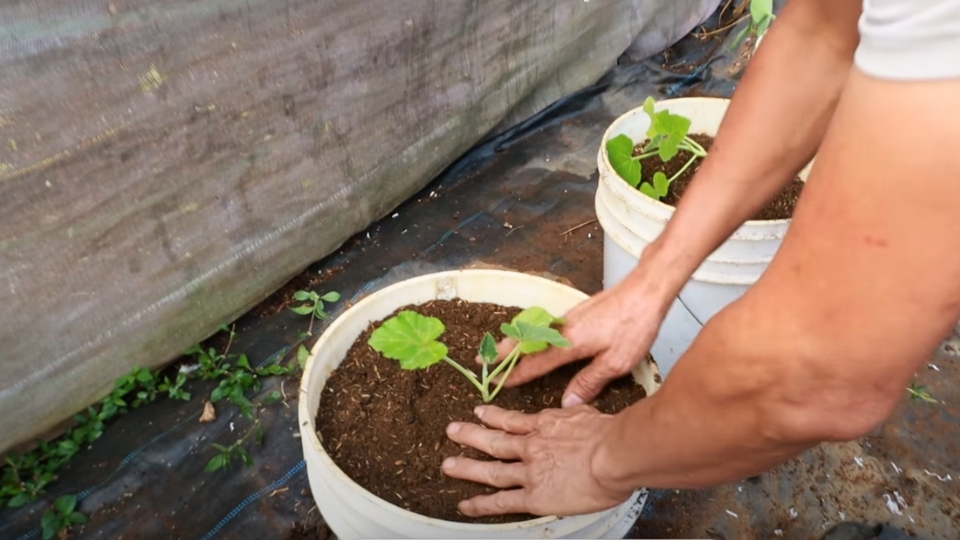
Ideal Planting Season
Spaghetti squash seeds thrive when the soil warms up. The ideal window is two weeks after the last frost date in your area. This usually falls between late spring and early summer. Use this timeline:
- Prepare the soil in late winter.
- Start seeds indoors if in a cold region.
- Transplant outdoors post-last frost.
Understanding Local Climate
Your local climate dictates the precise planting time. Consider these factors:
| Climate Type | Planting Period |
|---|---|
| Mild | Early spring |
| Temperate | Mid to late spring |
| Cold | Early summer |
Stay abreast with the local frost dates and adjust your planting schedule accordingly. For specifics, check local garden resources.
Preparing Your Garden
Gardening enthusiasts take note: if spaghetti squash is in your planting plans, read on. Success begins with garden preparation, a key step in nurturing these delicious, versatile fruits.
Soil Composition And Ph
Spaghetti squash thrives in well-drained soil. Aim for a mix rich in organic matter. Achieve this by amending your garden’s soil with compost or aged manure. The goal is a balance that holds moisture yet drains excess water efficiently. Test your soil’s pH – spaghetti squash prefers a pH between 6.0 and 6.8. Locally available lime or sulfur can adjust the pH as needed.
Bed Preparation And Spacing
Preparing the bed begins by tilling the soil. Remove any rocks or weeds. Incorporate organic amendments. Create raised rows or beds to promote good drainage. Space squash plants 3 to 4 feet apart in rows spaced 6 to 8 feet apart. This gives vines room to spread and allows the gardener to move around the plants easily.
| Task | Details |
|---|---|
| Bed Tilling | Till to a depth of 8 inches, removing obstructions. |
| Amendment Addition | Work compost into the soil for nutrients and structure. |
| Row Creation | Build raised rows to enhance drainage. |
| Plant Spacing | Place plants 3-4 feet apart in rows 6-8 feet apart. |
- Check for drainage to prevent waterlogged roots.
- Ensure full sun exposure for healthy growth.
- Mulch after planting to maintain soil warmth and moisture.
Planting Techniques
Excited about growing spaghetti squash? Before you start, understand that proper planting techniques are essential. These techniques will help ensure a bountiful harvest of this versatile veggie.
Sowing Depth And Techniques
Getting the sowing depth right is critical for successful growth. Plant seeds:
- One inch deep into the soil.
- In mounds or rows, maximize space in your garden.
- With six to eight feet between each plant.
After planting, water the seeds well and keep the soil moist. This helps seeds settle, and roots establish more effectively.
Germination Tips
Your seeds need the right conditions to sprout. Follow these tips:
- Use well-draining soil to prevent oversaturation.
- Keep the soil temperature around 70°F for optimal germination.
- Maintain consistent moisture but avoid waterlogging the seeds.
Monitor your seeds daily. Expect germination within 7 to 14 days. When shoots appear, ensure they get full sunlight to grow strong and healthy.
Caring For Your Plants
Spaghetti squash plants need love and attention to thrive. It is like having a garden pet. They look tough on the outside but want care on the inside. Let’s explore how to keep them happy and healthy!
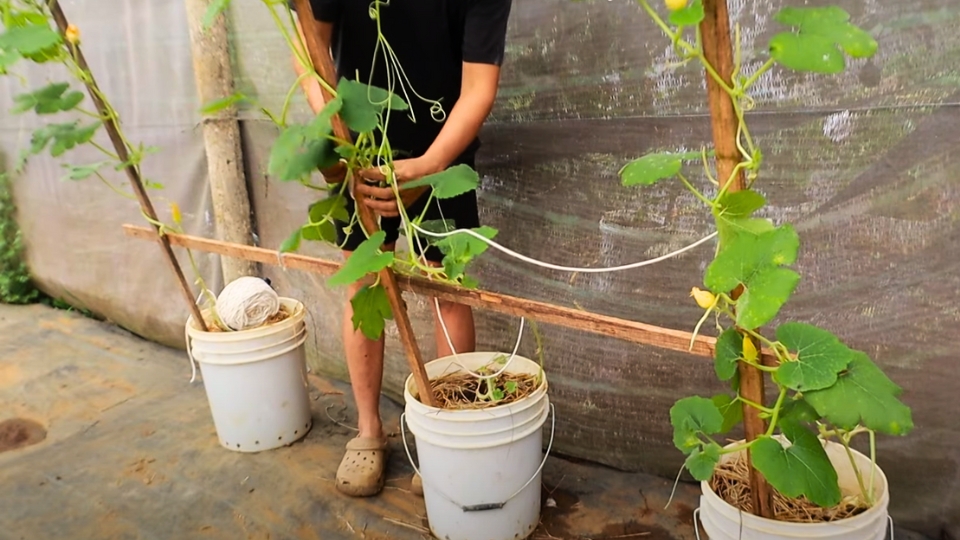
Watering Requirements
Regular watering keeps spaghetti squash smiling. These plants do best with even moisture. Aim for about one inch of water per week. Use a rain gauge or check the soil. It should be moist, not drenched or dry. Remember, water is early in the morning. This helps prevent diseases and gives plants a sunny day to dry.
Fertilization And Nutrition
Think of fertilizer as vitamins for plants. Feed your spaghetti squash right, and they will grow big and strong. Start with compost or a balanced vegetable fertilizer. Mix it into the soil.
- Apply a slow-release fertilizer at planting time.
- Then, use a water-soluble fertilizer every 3-4 weeks.
Always follow the instructions on the label. Overfeeding can hurt your squash.
Pest And Disease Management
Growing spaghetti squash is a gratifying endeavor for any home gardener. Ensuring your vines thrive involves proactive pest and disease management. Recognizing common threats early can mean distinguishing between a bountiful harvest and a lost crop.
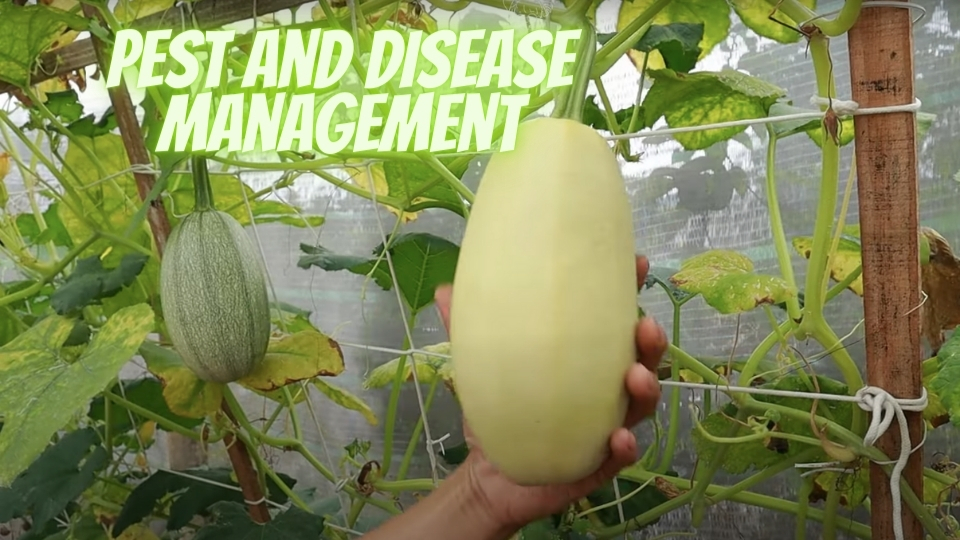
Common Threats To Spaghetti Squash
Like any garden vegetable, spaghetti squash faces its share of foes. Insects and fungi top the list of usual suspects. Let’s delve into who these invaders are:
- Squash bugs—they suck the sap, weakening the plant.
- Squash vine borers—they burrow into stems, disrupting growth.
- Powdery mildew—a white, powdery fungus that affects leaves.
Organic Control Measures
Organic solutions keep your spaghetti squash healthy without chemical intervention. These measures are safe and eco-friendly.
| Pest/Disease | Organic Control Method |
|---|---|
| Squash Bugs | Hand-picking, neem oil, and diatomaceous earth. |
| Squash Vine Borers | Yellow sticky traps, beneficial nematodes. |
| Powdery Mildew | Baking soda spray, milk spray, improved air circulation. |
Cultural practices also play a role. Proper spacing and crop rotation prevent disease. Attracting beneficial insects, like ladybugs, helps too.
Consistent monitoring is key. Check plants often for early signs of trouble. This way, you can act swiftly and keep your spaghetti squash on track for a successful harvest.
Harvesting And Storage
Growing spaghetti squash is a gratifying journey from planting seeds to harvesting. But how do you know when it’s time to pick? And once you do, how should you keep your bounty fresh?
The secrets to perfect spaghetti squash are all in the timing and technique. Let’s explore the steps to ensure your squash stays delicious long after it’s picked.
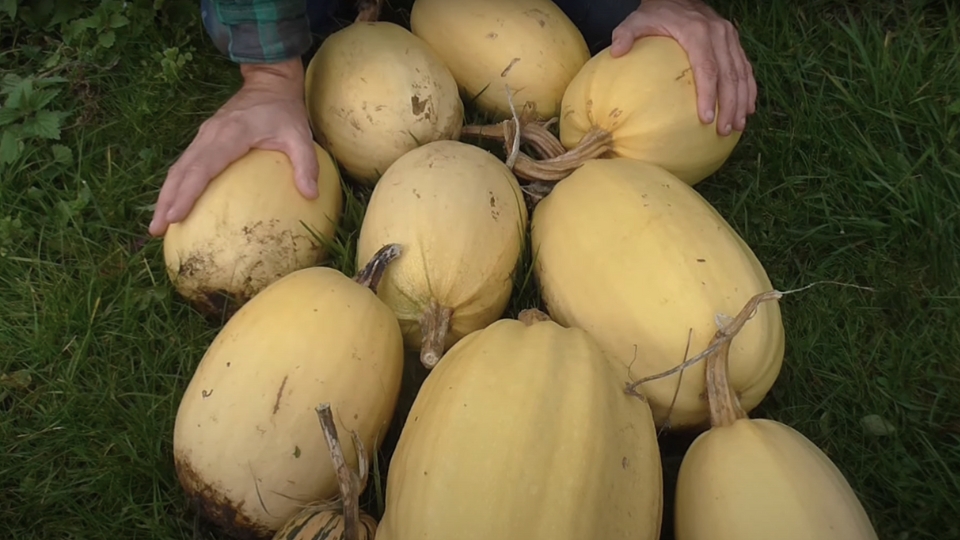
Signs Of Maturity
- Color: Look for a golden yellow or a dark yellow hue.
- Rind: The skin should be hard; test by pressing a fingernail into it.
- Size: Mature fruit should be firm and full-sized, typically 9-12 inches long.
Proper Harvesting Technique
- Wait for a dry, sunny day to avoid trapping moisture that might cause rot.
- Use clean, sharp shears. Make sure they are sanitized to prevent disease.
- Cut the stem about 2-3 inches above the squash to provide a good handle.
Storing For Longevity
Post-harvest spaghetti squash can last for months if stored correctly.
Follow these guidelines to extend freshness:
| Condition | Duration |
|---|---|
| Room Temperature | Up to 2 Months |
| Cool & Dry Place | 3 to 6 Months |
- Do not wash squash before storing it to keep moisture out.
- Avoid placing them where they touch each other to prevent decay.
Frequently Asked Questions For Growing Spaghetti Squash
How Long Does It Take Spaghetti Squash To Grow?
Spaghetti squash typically takes 90 to 100 days to mature after planting.
Does Spaghetti Squash Need To Climb?
Spaghetti squash does not necessarily need to climb, but supporting it like a trellis can promote air circulation and reduce pest issues.
How Many Spaghetti Squash Grow On One Vine?
A spaghetti squash vine typically produces between 1 to 5 fruits. Growing conditions and vine health significantly influence the yield.
Final Word
Nurturing spaghetti squash in your garden is a rewarding endeavor. With the right techniques, you’ll enjoy a bountiful harvest. Remember to choose a sunny spot, keep the soil moist, and give them room to flourish. Happy gardening, and relish the fruits of your labor with delicious, home-grown spaghetti squash!
Video Source: https://www.youtube.com/watch?v=cIHB0X4fi6A

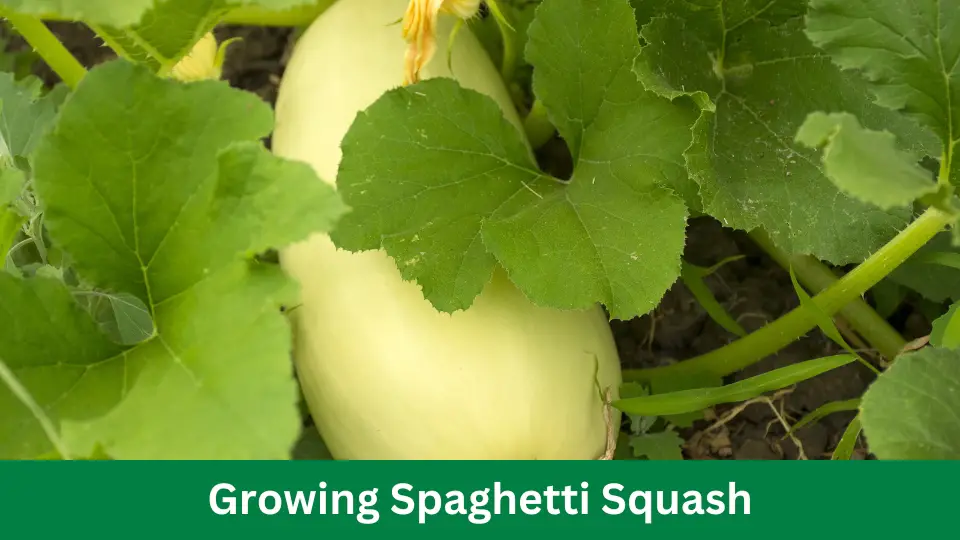


I’ve been browsing on-line greater than 3 hours as of late, but I never discovered any attention-grabbing article like
yours. It is pretty price enough for me. In my view, if all website owners and bloggers made good content material as you did, the net will be a lot more helpful than ever before.
Thank you so much, And keep Staying With me!
Owh Nice Article my mate, Im So happy
Thanks Dear, Keep calm and Reach
I am sure this piece of writing has touched all the people on the internet. Its really really good article
on building up new webpage.